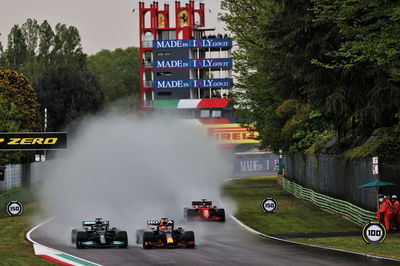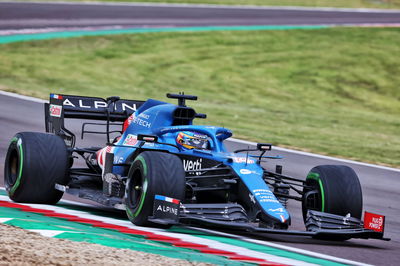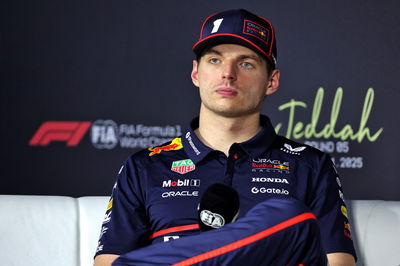10 things we learned from F1's Emilia Romagna Grand Prix
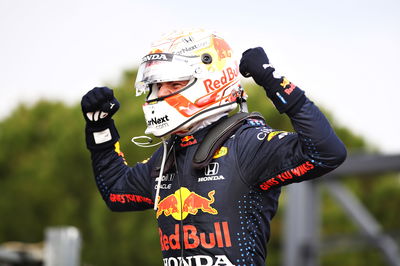
After failing to win the F1 season-opening Bahrain Grand Prix, Max Verstappen knew he couldn’t allow Lewis Hamilton to build momentum and cement his lead at the top of the championship.
A scrappy qualifying from the Dutchman left him third and it looked like the pressure of finally having a car capable of taking it to Hamilton was getting to him.
Verstappen put any doubts to bed with an assured victory at Imola, storming to the lead from third at the start.
A small off as the race was about to restart following the red flag period was the only blemish on Verstappens’ race day performance as he moved to within a point of championship leader Hamilton.
Here are 10 things we learned from the 2021 Emilia Romagna Grand Prix...
1. Red Bull-Honda combination has improved in all areas
After Bahrain, it was clear the Red Bull RB16B was a car capable of winning this year’s title in the hands of Verstappen.
One notable area of weakness in recent seasons - in particular in the wet - was how the Red Bull got off the line.
“The key I think was to get that good launch which was also a bit of a surprise to me that after last year where we always struggled in the wet I think over the winter and the beginning of the year we’ve definitely made some improvements with that and today that was very good,” Verstappen said in the post-race press conference following his win at Imola.
Verstappen powered past Red Bull teammate Sergio Perez off the start and had enough momentum to ensure he led into the opening sequence of corners ahead of Hamilton.
A key area of improvement for Red Bull as it looks to win its first titles since 2013.
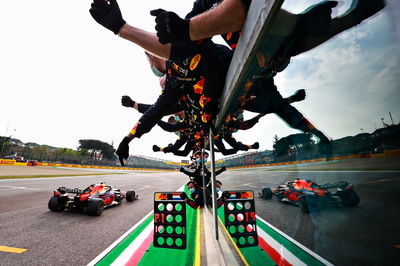
2. Verstappen forcing Hamilton to take risks - and make mistakes
Verstappen’s 10th career victory was secured when Hamilton made a rare mistake at Tosa while trying to lap the Williams of George Russell, running into the gravel and tapping the barrier.
Ultimately the mistake didn’t prove to be too costly for the reigning world champion as he recovered from ninth, benefitting - somewhat ironically - from the incident between Russell and Mercedes teammate Valtteri Bottas’ crash, which resulted in a red flag stoppage and thus allowed the team to repair his damaged car.
Hamilton’s urgency to get past the backmarkers was because Verstappen was getting away - he knew he couldn’t afford to lose any time to the relentless Dutchman.
Perhaps if it was Bottas in the lead, Hamilton would have taken fewer risks given that he’d have known that more than likely he’d have had the pace to overtake his teammate, as we saw on countless occasions in 2020.
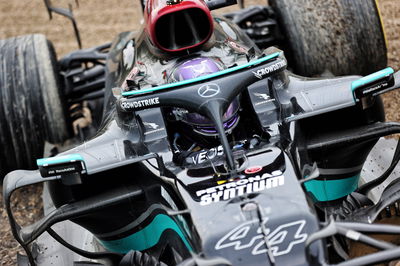
3. Norris has made another step in 2021
While we are only two races into the 2021 F1 season, the form of Lando Norris has been remarkable.
Had it not been for a minor track extension at Turn 9 on his final Q3 effort, he’d have qualified third ahead of Verstappen.
Starting from 7th, Norris demonstrated outstanding pace in wet and dry conditions, pace spectacular enough for McLaren to order Daniel Ricciardo to move out of the way.
Norris then made the most of his soft tyres on the restart to displace Charles Leclerc for second place.
He resisted pressure from Hamilton for as long as he could but the sheer pace of the W12 and the lengthier DRS zone meant Norris ultimately had to settle for third.
Hamilton, Verstappen and Leclerc are currently widely regarded as F1’s three best drivers.
While it is early days, should Norris maintain this level of form and keep Ricciardo at arm’s length - perhaps it will then be time to be talking about Norris as one of F1’s biggest talents.
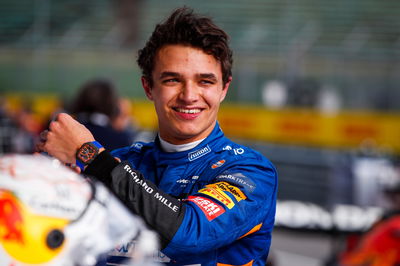
4. Time for the ‘wingmen’ to step up
The battle for the drivers’ championship looks set to be between Hamilton and Verstappen, but the constructors’ title will come down to who performs better out of Bottas and Perez.
Perez fared the better of the two at Imola as he outqualified teammate Verstappen, while Bottas could only manage eighth on the grid as he struggled to get his front tyres up to temperature for both of his laps in Q3.
The Mexican couldn’t maintain the pace he showed in qualifying nor teammate Verstappen as he was embroiled in a fight with Norris and Leclerc for the podium after serving his 10-second stop-go penalty for illegally overtaking under the Safety Car.
Shortly after the race resumed after the red flag, Perez lost control of his car at the exit of the Villeneuve chicane, dropping him outside of the points-paying positions.
With Bottas out of the race thanks to his incident with Russell, it was the perfect opportunity for Red Bull and Perez to take advantage.
Looking ahead to Portimao, both Bottas and Perez will be under pressure to deliver with their teammates on the top of their games.
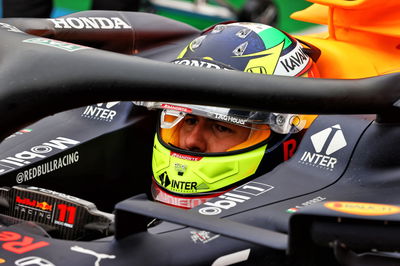
5. Ricciardo and Alonso still need time to adapt
Moving to a new team is never easy and the struggles of Ricciardo and Fernando Alonso at Imola show they still need time to adapt to their new surroundings.
Ricciardo’s pace comparatively to Norris was nowhere near all weekend, finishing 27s behind in the end.
Alonso could only manage 15th in qualifying, while teammate Esteban Ocon qualified ninth.
It was a scrappy race for the two-time F1 champion, running into the barriers on his way to the grid and spinning while making his way through the debris on the track as a result of the Bottas-Russell incident.
Ricciardo and Alonso couldn’t keep up with their younger teammates, but both drivers left Italy with points to their name.
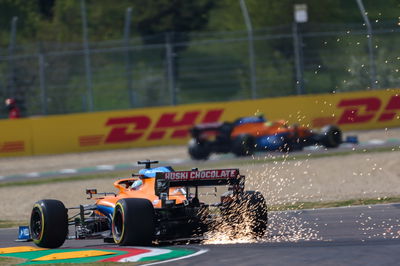
6. Williams are on the up
It was ultimately another missed opportunity for Williams to score points as Russell and Nicholas Latifi failed to finish.
Regardless, there were still a lot of positives for the Grove-based outfit as both cars made it into Q2 for the first time since Hungary last year.
Russell qualifying 12th; Latifi 14th - it’s encouraging for Williams and should it continue, points should be on the horizon soon.
7. Calm the Tsunoda hype
Yuki Tsunoda’s performance and overtaking prowess in Bahrain attracted a lot of attention.
Imola would have brought the young Japanese rookie back down to Earth as he endured a torrid weekend.
The AlphaTauri at Imola was destined to perform well given it has tested at the circuit on multiple occasions ahead of the season, while the AT02 looks like a very capable car based on pre-season testing and the first race.
Tsunoda binned it in Q1 and was forced to start last.
A strong first half of the race was ruined when he spun while trying to fight Lewis Hamilton after the red flag restart.
There's no doubting Tsunoda’s talents and potential but Imola highlighted how far he still has to go.
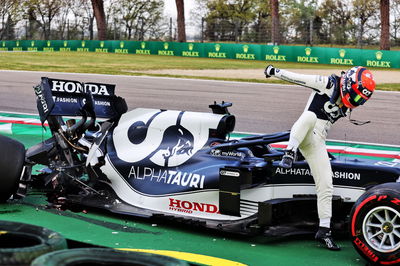
8. Qualifying is a spectacle again
In recent seasons, qualifying has tended to be quite routine with either Mercedes driver taking pole position with Verstappen in third.
While there is still a significant gap in performance in race trim, the gaps in performance over a single qualifying lap is making qualifying a fantastic spectacle.
The top eight at Imola were within just over 0.4s - the tightest margin we have seen in F1 since Malaysia 2012.
Long may it continue!
9. F1 can police track limits consistently
After a farcical season-opener in Bahrain where track limits dominated the headlines, F1 showed at Imola it can police track limits consistently and fairly.
There was no drama at Imola and no confusion - the rules were clear.
Potentially aided by Imola’s unforgiving nature, only Norris in Q3 and Tsunoda in the race (who was awarded a five-second penalty for exceeding track limits more than three times) were the notable drivers to have been affected by the rules.
Hopefully, it is the same at Portimao next up.
10. Imola deserves a regular spot on the F1 calendar
The Autodromo Enzo e Dino Ferrari is steeped in F1 history and the 2021 race showed why it should be a regular fixture on the calendar.
Unforgiving track limits, high-speed, gravel, nostalgia - all the ingredients needed to make a great F1 grand prix.
While overtaking isn’t the easiest at Imola, the extended DRS zone did allow for better action and wheel-to-wheel duels into Tamburello.
Any circuit with a lack of run-off has a thumbs up from me.
